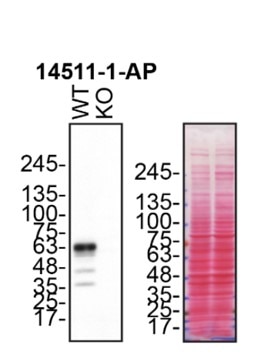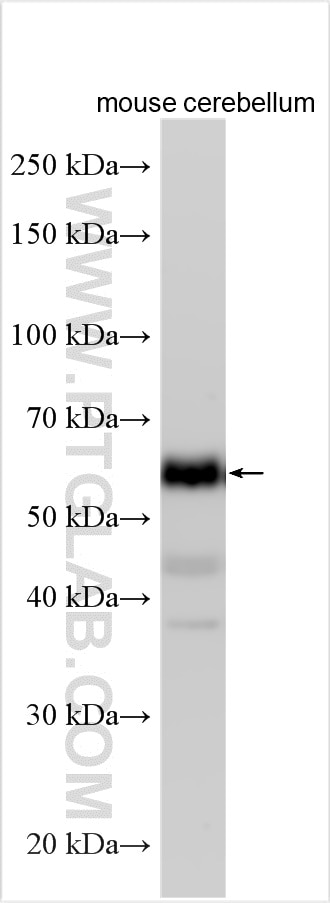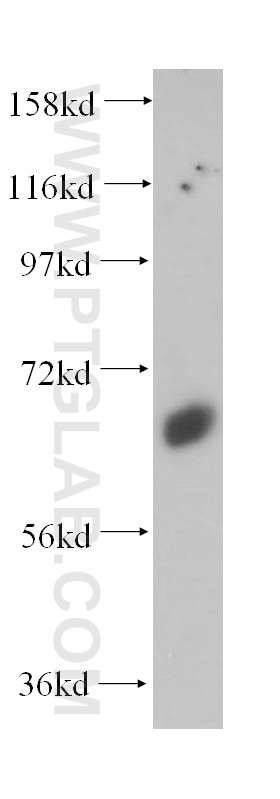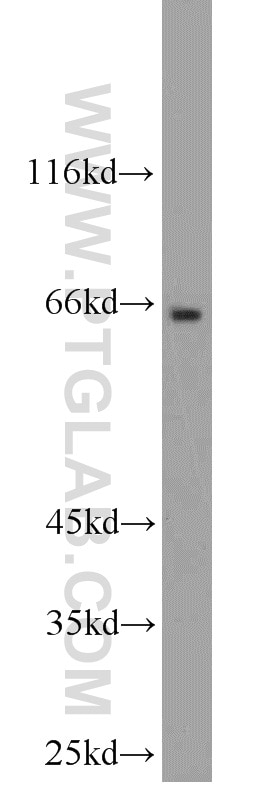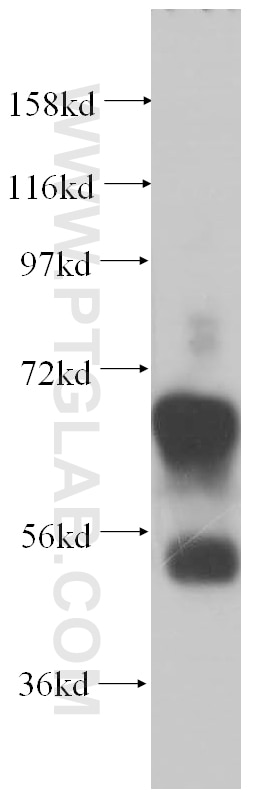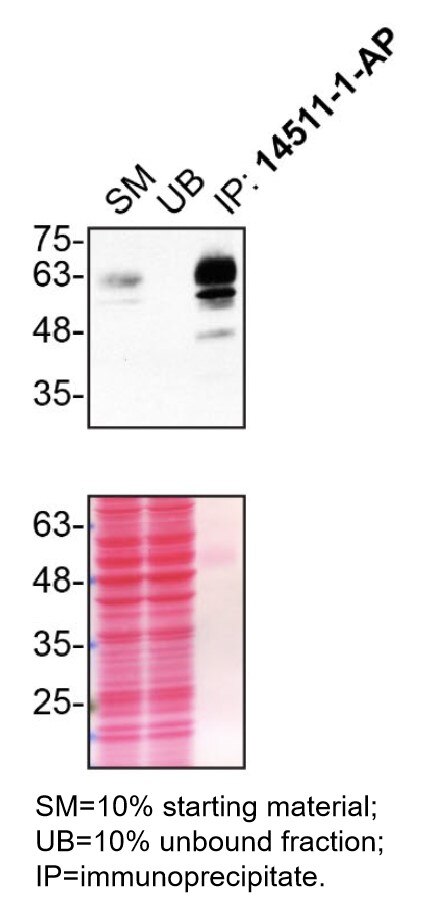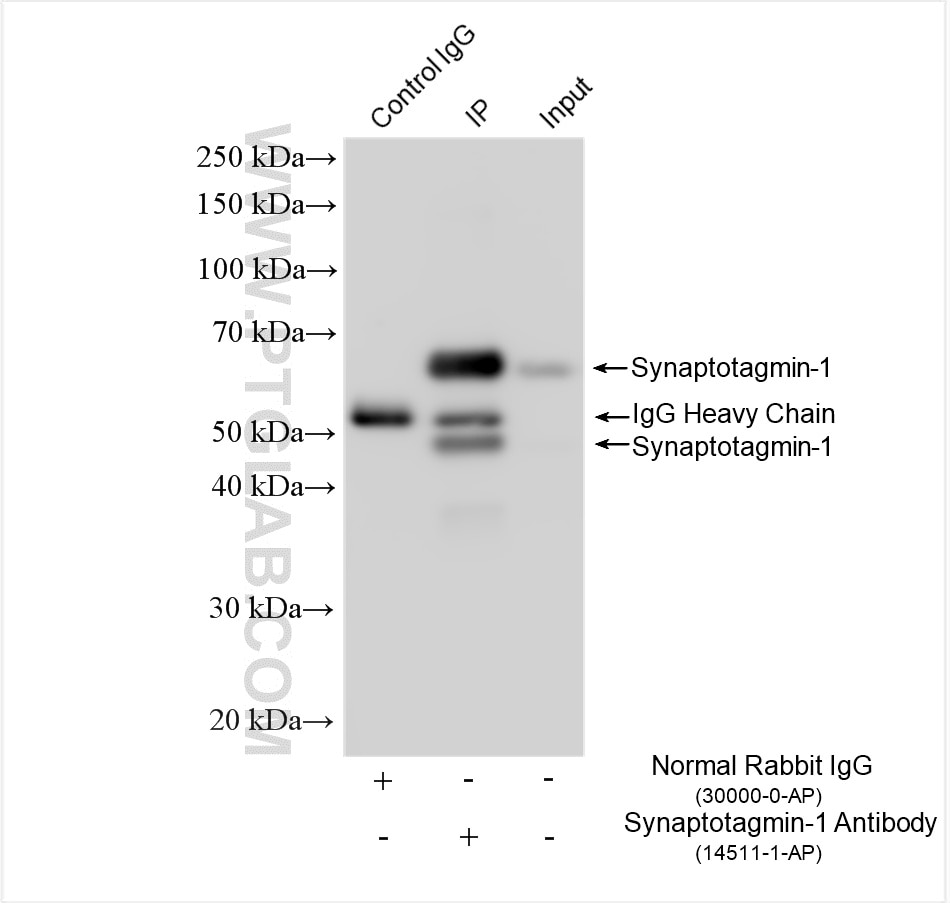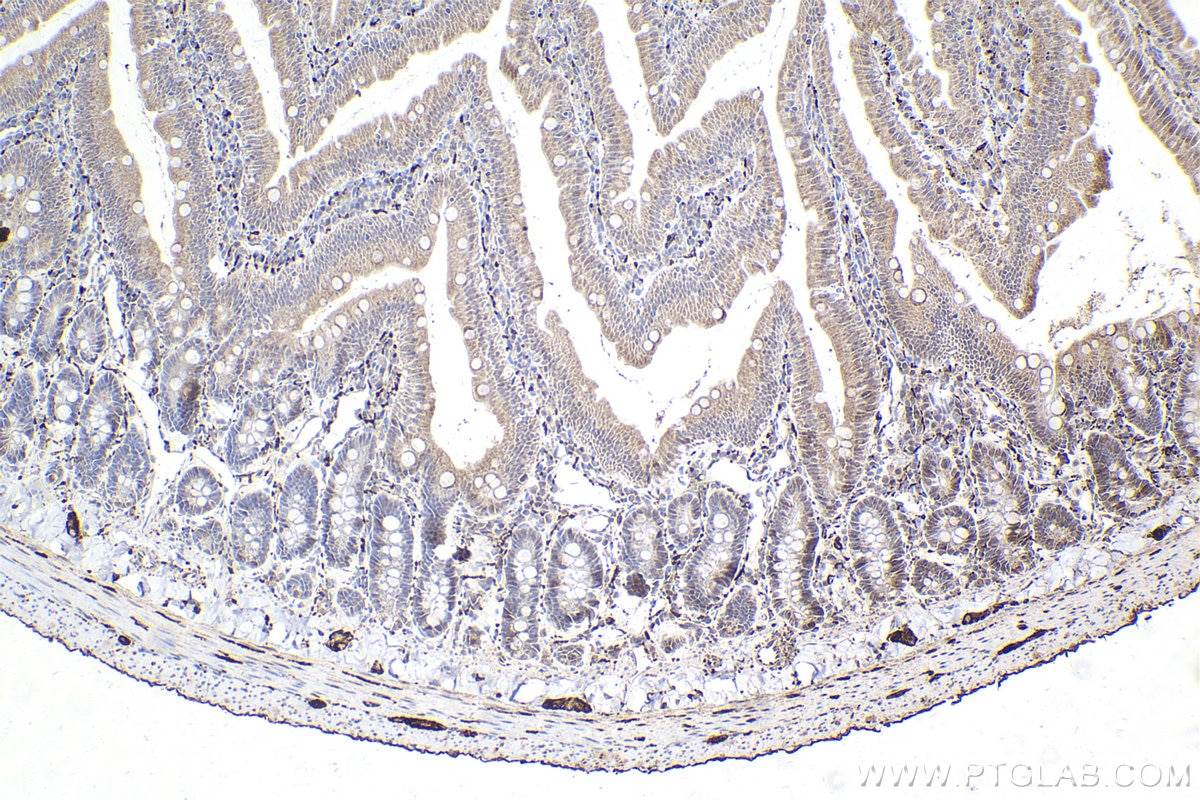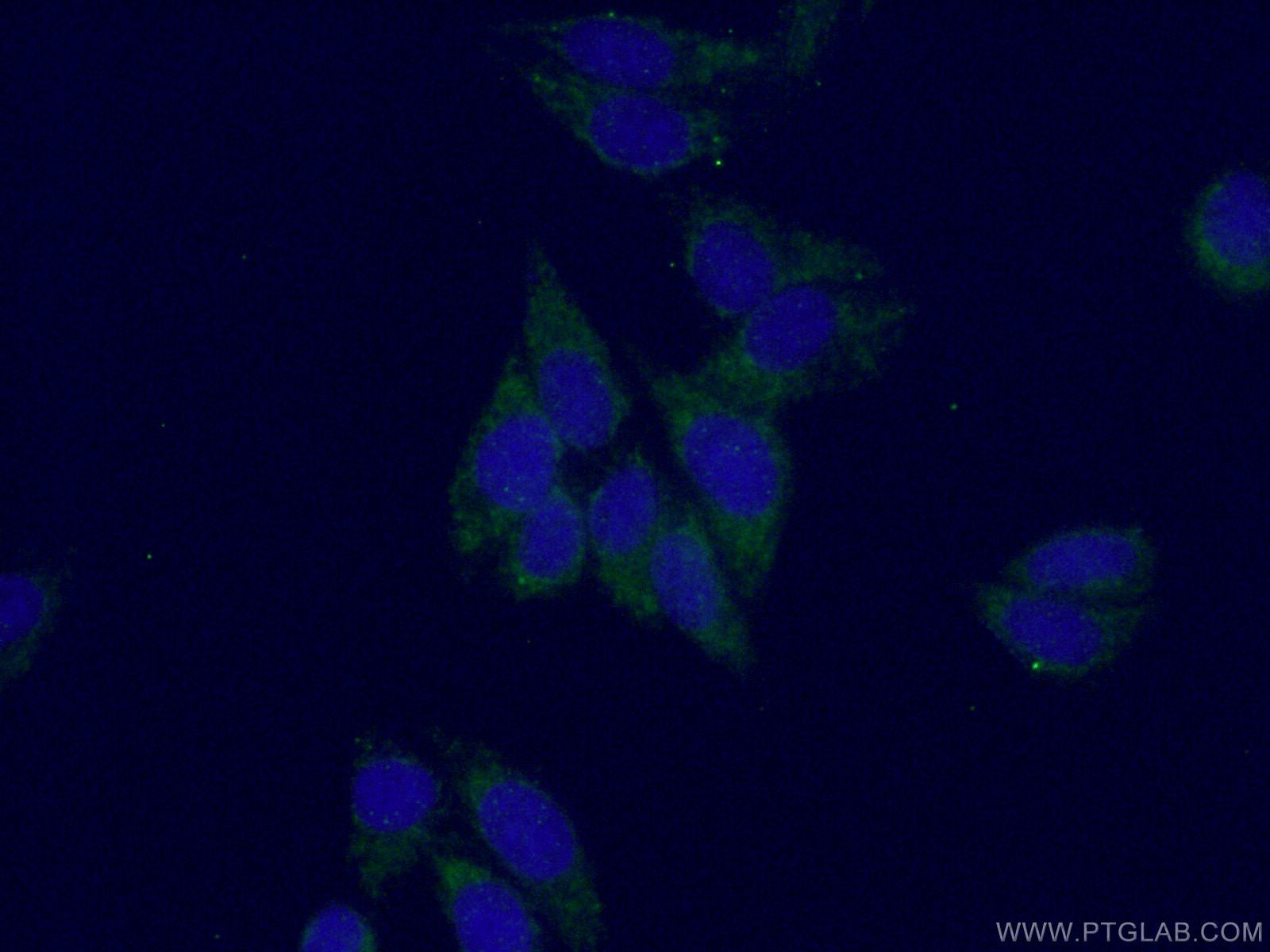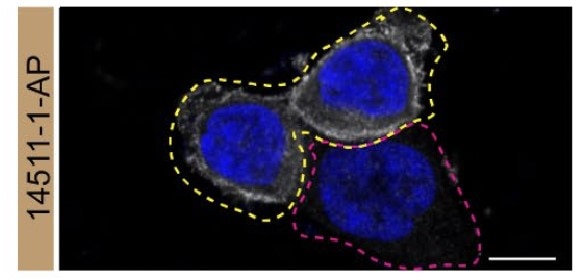- Featured Product
- KD/KO Validated
Synaptotagmin-1 Polyklonaler Antikörper
Synaptotagmin-1 Polyklonal Antikörper für WB, IHC, IF/ICC, IP, ELISA
Wirt / Isotyp
Kaninchen / IgG
Getestete Reaktivität
human, Maus und mehr (1)
Anwendung
WB, IHC, IF/ICC, IP, ELISA
Konjugation
Unkonjugiert
Kat-Nr. : 14511-1-AP
Synonyme
Geprüfte Anwendungen
| Erfolgreiche Detektion in WB | Maus-Cerebellum-Gewebe, HCT 116-Zellen, humanes Lebergewebe, Maushodengewebe, Y79-Zellen |
| Erfolgreiche IP | Maus-Cerebellum-Gewebe, HCT 116-Zellen |
| Erfolgreiche Detektion in IHC | Ratten-Dünndarmgewebe Hinweis: Antigendemaskierung mit TE-Puffer pH 9,0 empfohlen. (*) Wahlweise kann die Antigendemaskierung auch mit Citratpuffer pH 6,0 erfolgen. |
| Erfolgreiche Detektion in IF/ICC | HepG2-Zellen, HCT 116-Zellen |
Empfohlene Verdünnung
| Anwendung | Verdünnung |
|---|---|
| Western Blot (WB) | WB : 1:4000-1:20000 |
| Immunpräzipitation (IP) | IP : 0.5-4.0 ug for 1.0-3.0 mg of total protein lysate |
| Immunhistochemie (IHC) | IHC : 1:500-1:2000 |
| Immunfluoreszenz (IF)/ICC | IF/ICC : 1:50-1:500 |
| It is recommended that this reagent should be titrated in each testing system to obtain optimal results. | |
| Sample-dependent, check data in validation data gallery | |
Veröffentlichte Anwendungen
| KD/KO | See 1 publications below |
| WB | See 17 publications below |
| IHC | See 3 publications below |
| IF | See 5 publications below |
| IP | See 1 publications below |
Produktinformation
14511-1-AP bindet in WB, IHC, IF/ICC, IP, ELISA Synaptotagmin-1 und zeigt Reaktivität mit human, Maus
| Getestete Reaktivität | human, Maus |
| In Publikationen genannte Reaktivität | human, Maus, Ratte |
| Wirt / Isotyp | Kaninchen / IgG |
| Klonalität | Polyklonal |
| Typ | Antikörper |
| Immunogen | Synaptotagmin-1 fusion protein Ag5970 |
| Vollständiger Name | synaptotagmin I |
| Berechnetes Molekulargewicht | 48 kDa |
| Beobachtetes Molekulargewicht | 65 kDa, 47 kDa |
| GenBank-Zugangsnummer | BC058917 |
| Gene symbol | Synaptotagmin-1 |
| Gene ID (NCBI) | 6857 |
| Konjugation | Unkonjugiert |
| Form | Liquid |
| Reinigungsmethode | Antigen-Affinitätsreinigung |
| Lagerungspuffer | PBS with 0.02% sodium azide and 50% glycerol |
| Lagerungsbedingungen | Bei -20°C lagern. Nach dem Versand ein Jahr lang stabil Aliquotieren ist bei -20oC Lagerung nicht notwendig. 20ul Größen enthalten 0,1% BSA. |
Hintergrundinformationen
The synaptotagmins are integral membrane proteins of synaptic vesicles thought to serve as Ca(2+) sensors in the process of vesicular trafficking and exocytosis (PMID: 8058779). SYT1 (synaptotagmin I) was firstly identified as a 65-kDa protein with a wide distribution in neuronal and neurosecretory tissue (PMID: 7298720). Calcium binding to SYT1 participates in triggering neurotransmitter release at the synapse (PMID: 11242035). In addition to regulating exocytosis, SYT1 has also been implicated in endocytosis and neurite outgrowth (PMID: 15492212; 11078930; 10336114). This antibody recognizes endogenous SYT1, which has an experimentally determined molecular mass of 65-68 kDa. An additional band of 47 kDa could also be detected, which is corresponding to the calculated molecular weight of SYT1.
Protokolle
| PRODUKTSPEZIFISCHE PROTOKOLLE | |
|---|---|
| WB protocol for Synaptotagmin-1 antibody 14511-1-AP | Protokoll herunterladen |
| IHC protocol for Synaptotagmin-1 antibody 14511-1-AP | Protokoll herunterladenl |
| IF protocol for Synaptotagmin-1 antibody 14511-1-AP | Protokoll herunterladen |
| IP protocol for Synaptotagmin-1 antibody 14511-1-AP | Protokoll herunterladen |
| STANDARD-PROTOKOLLE | |
|---|---|
| Klicken Sie hier, um unsere Standardprotokolle anzuzeigen |
Publikationen
| Species | Application | Title |
|---|---|---|
Cell Rep The complement inhibitor CD59 is required for GABAergic synaptic transmission in the dentate gyrus | ||
Theranostics ANKRD22, a novel tumor microenvironment-induced mitochondrial protein promotes metabolic reprogramming of colorectal cancer cells. | ||
Front Mol Neurosci A Stimulation Function of Synaptotagmin-1 in Ternary SNARE Complex Formation Dependent on Munc18 and Munc13. | ||
J Psychiatr Res Early life stress enhances the susceptibility to depression and interferes with neuroplasticity in the hippocampus of adolescent mice via regulating miR-34c-5p/SYT1 axis | ||
Biochim Biophys Acta Mol Cell Biol Lipids Hepatic Synaptotagmin 1 is involved in the remodelling of liver plasma- membrane lipid composition and gene expression in male Apoe-deficient mice consuming a Western diet. | ||
J Proteomics Quantitative proteomics reveals olfactory input-dependent alterations in the mouse olfactory bulb proteome. |
